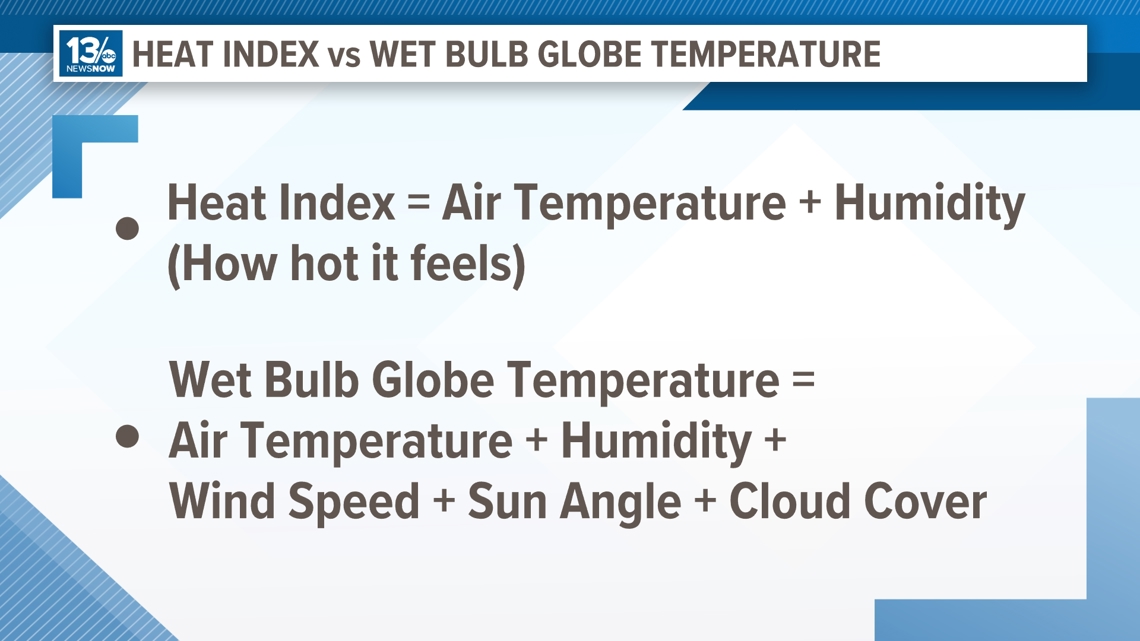NORFOLK, Va. — When it comes to dangerous summer heat, there are several factors to consider beyond the temperature.
Most of us are familiar with the heat index, or summertime “feels like” temperature, which helps us determine the effects of the heat on our bodies. But there’s another indicator of the heat’s stress on your body called the Wet Bulb Globe Temperature, or WBGT.
The Wet Bulb Globe Temperature is a more comprehensive way of showing the effect of the heat on your body. While the traditional heat index uses only the temperature and humidity and is calculated in shady areas, the WBGT takes temperature, humidity, wind speed, sun angle and cloud cover into consideration.


If the temperature is 90° and the dew point is 65°, the heat index will be 92° no matter the sky cover, wind speed or sun angle.
With the same temperature and dew point plus 5% cloud cover and a 3-mph wind, the WBGT would be 89°. The WBGT would fall to 81° with 65% cloud cover and a 13-mph wind.
Even though the WBGT is lower than the actual air temperature, it’s a measure of heat stress in direct sunlight. And it’s been used for decades by the military to keep members of the armed forces safe. And in recent years, more colleges and high schools have been using the WBGT to keep student-athletes safe in summer practices.
The WBGT scale details the impact and actions individuals should take to stay safe in the heat.


The heat index is typically a higher number than the WBGT simply because the two use completely different equations and scales.
OSHA, and many other countries, use the WBGT as a guide to manage workload in the sun.

